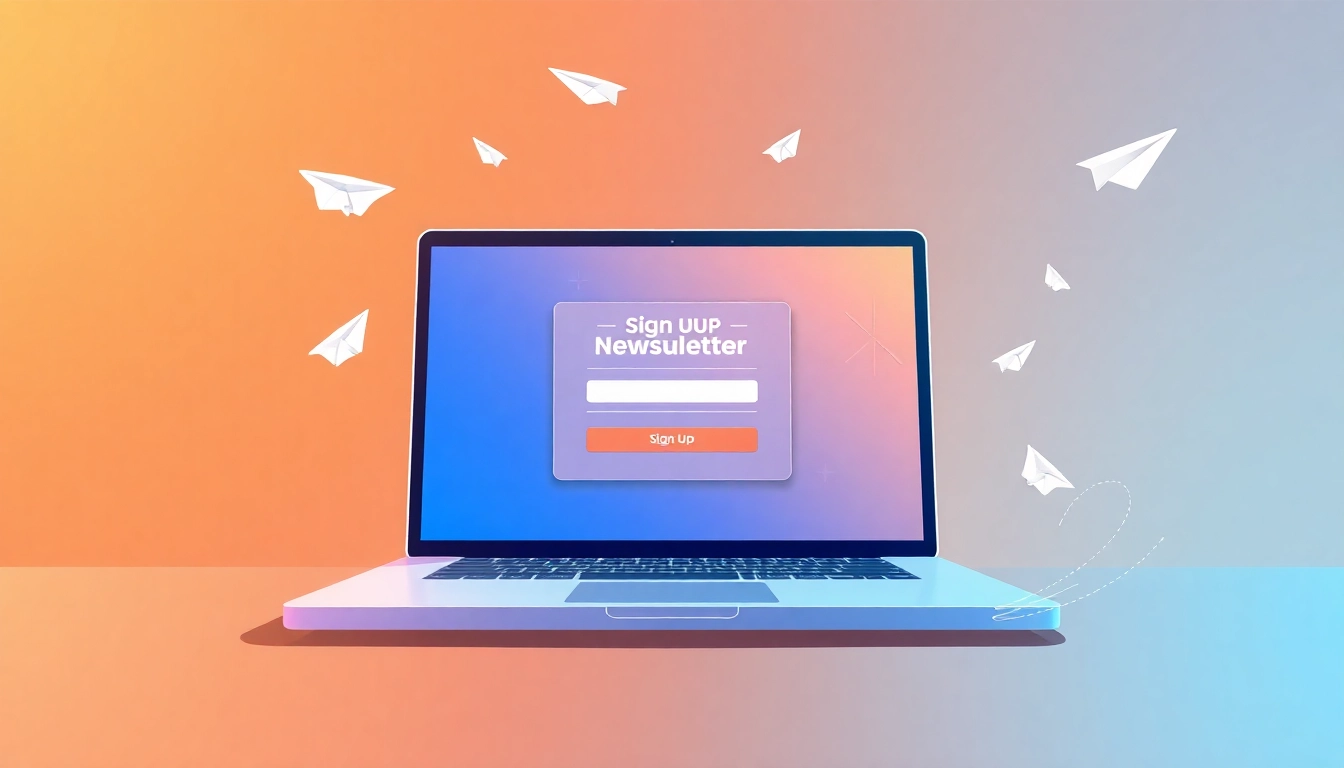Understanding the Importance of Newsletter Signup
In today’s digital landscape, capturing and nurturing leads through effective email marketing is crucial for any business striving for growth and engagement. One of the most critical steps in building a robust email marketing strategy is the newsletter signup process. Not only does a well-structured signup form help in building a targeted mailing list, but it also serves as a gateway to deeper communication with your audience. Understanding its significance is the first step to unlocking its full potential.
The Role of Email Marketing in Business Growth
Email marketing has proven to be one of the highest-return-on-investment strategies available today. According to recent studies, for every dollar spent on email marketing, businesses can expect an average return of $36. This stat reinforces the value of establishing direct communication channels with customers through newsletters. Newsletters act as a bridge between brands and customers, providing valuable content while promoting products or services directly to interested parties.
How Effective Newsletter Signup Drives Engagement
Effective newsletter signup forms are essential for engaging your audience. They allow prospects to express interest in your content, products, or services. Once users subscribe, they become part of a community where personalized messages can be crafted based on their preferences and interests. This not only boosts engagement but also helps in building long-lasting relationships with your audience, leading to higher customer retention rates.
Common Misconceptions About Newsletter Signup
Despite the benefits associated with newsletter signups, several misconceptions can hinder effectiveness. A common belief is that simply having a signup form on a website is sufficient. However, the truth is that attracting subscribers requires more than just placement; it demands strategy, creativity, and ongoing optimization. Misunderstandings around user privacy also arise, particularly regarding how data will be used, which can deter signups. Addressing these misconceptions through transparency and value proposition can open doors to increased subscription rates.
Best Practices for Designing Newsletter Signup Forms
Key Elements of High-Converting Signup Forms
To create a high-converting newsletter signup form, certain elements must be prioritized:
- Simple Design: An uncluttered, professional design enhances user experience and reduces friction.
- Clear Call-to-Action (CTA): The signup button should have compelling text that invites users to take immediate action.
- Minimal Fields: Ask only for essential information to reduce barriers to entry—name and email are typically sufficient for initial signups.
- Privacy Assurance: Reinforce user trust by stating how their information will be used and by offering a privacy policy link.
Placement and Timing: Maximizing Visibility
The effectiveness of your newsletter signup form is heavily influenced by its placement on your website and timing in terms of user interaction. Here are some effective strategies:
- Above the Fold: Ensure the signup form is visible without scrolling, ideally placed on the homepage or landing pages.
- Exit-Intent Popups: Utilize popups that appear when a user is about to leave the site, offering a last chance to subscribe.
- Post-Content Signup: Place signup forms at the end of blog posts where the reader is already engaged.
Using Incentives to Boost Newsletter Signups
Offering incentives can significantly increase your signup rates. Here are some popular incentives:
- Free Ebooks or Guides: Providing valuable resources in exchange for email addresses compels users to sign up.
- Exclusive Discounts: Offering special promotions or discounts that are only available to subscribers can incentivize signups.
- Access to Exclusive Content: Letting users know they will receive premium content can create anticipation and boost subscriptions.
Creating a Compelling Value Proposition for Newsletter Signup
Articulating the Benefits of Subscribing
To maximize your newsletter signup potential, clearly articulate to users what they stand to gain by subscribing. Benefits can include:
- Regular Updates: Inform subscribers about new products, services, or content directly impacting them.
- Insights and Tips: Offer valuable insights, advice, and tips that can enhance the subscriber’s knowledge or experience related to your industry.
- Community Engagement: Foster a sense of belonging by showcasing community-driven initiatives or user-generated content.
Crafting Engaging Copy for Your Signup Forms
The language used in your signup form plays a critical role in persuading users to join your mailing list. Engaging and concise copy can make all the difference. Here are some techniques:
- Use Action-Oriented Language: Encourage action with verbs like “Join,” “Get,” or “Start.”
- Be Clear and Specific: Clearly explain what subscribers can expect after signing up to manage their expectations appropriately.
Leveraging Social Proof to Enhance Credibility
Social proof is a powerful motivator that can help alleviate doubts potential subscribers might have. Consider these tactics:
- Testimonials: Include quotes or endorsements from current subscribers about the value they receive.
- Subscriber Count: Highlight the number of current subscribers to build community feeling and credibility.
Advanced Techniques to Optimize Newsletter Signup
Segmenting Your Audience for Targeted Newsletters
Segmentation allows you to deliver highly personalized content based on subscriber preferences or behaviors. Consider segmenting your audience by:
- Demographics: Age, location, or interests can help tailor your messages to specific groups.
- Past Behavior: Analyze previous interactions with your emails to adjust content according to what users have engaged with before.
Utilizing A/B Testing to Improve Signup Rates
A/B testing, or split testing, is the practice of comparing two versions of your signup forms to determine which performs better. Experiment with:
- Different Copy: Test various headlines and calls to action to see what resonates most.
- Colors and Design: Modify the colors of your signup button or the layout and analyze how these changes affect conversion rates.
Analyzing Metrics to Fine-tune Your Strategy
Tracking performance metrics is vital for understanding what works and what needs adjustment. Key metrics to monitor include:
- Signup Conversion Rate: Determine the percentage of visitors who complete the signup process.
- Engagement Metrics: Measure open and click-through rates of your newsletters to gauge interest and relevance.
Real-World Examples of Successful Newsletter Signup Forms
Case Studies of Brands That Excel
Examining successful newsletter signup forms can provide valuable insights. Here are a few standout examples:
- Dropbox: Offered additional storage space for referrals, making it a compelling option for users.
- Neil Patel: Utilizes a straightforward but effective signup form with a clear value proposition and social proof.
Lessons Learned from High-Performing Signup Strategies
Some common strategies that lead to high performance include:
- Clarity and Simplicity: Successful forms are often simple and easy to understand, reducing barriers to signup.
- Testing and Iterating: Continuously tracking performance and adjusting ensures ongoing improvement and relevance.
How to Implement Similar Techniques for Your Brand
To implement high-performing techniques into your own newsletter signup forms, consider the following steps:
- Analyze your current forms and identify areas for improvement.
- Adopt best practices from successful case studies, adapting them to fit your brand’s voice and style.
- Continually test and optimize your forms based on user feedback and performance data.



